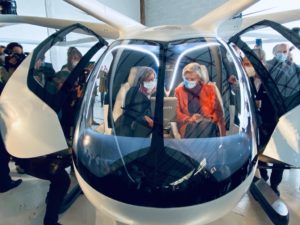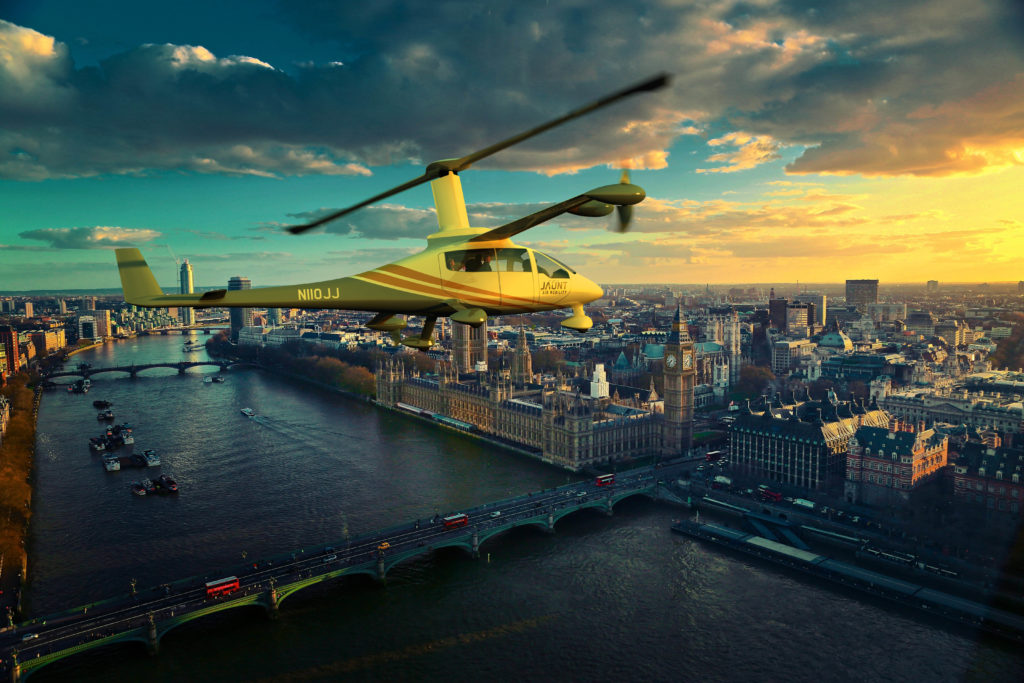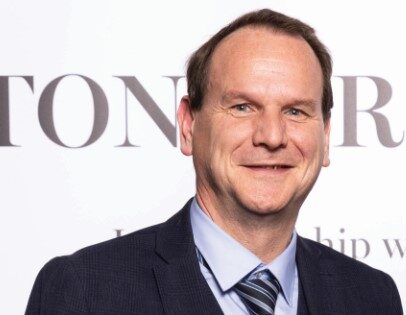Words by Paul Willis
This June a series of tests will begin at an airfield near Paris that could prove to be a watershed moment for urban air mobility.
The test area at the Pontoise-Cormeilles-en-Vexin airfield 16 miles (26km) north of Paris will feature thirty of the leading developers of urban air mobility (UAM) solutions, including vehicle makers and experts in infrastructure, operations, airspace integration and public acceptance. It is being overseen by the Paris-based international airport operator Groupe ADP and the city’s rail and subway operator.
Among those selected to take part are the aircraft makers Airbus, Vertical Aerospace, Ehang, Zipline, Safran and the German electric vertical take-off vehicle (eVTOL) developer Volocopter. Also taking part are aircraft operators such as Air France and the Swiss charging infrastructure company Green Motion.
The goal of the Pontoise test bed, says Sebastien Couturier, head of innovation at Groupe ADP, is to create a working example of a dedicated vertical take-off and landing airport, a vertiport, with a view to understanding the broader requirements of this new transport modality.
“So far there has been a lot of focus on the vehicle technology for UAM,” says Couturier. “But we are creating a new mode of transport so there needs to be a holistic approach that takes into account not just vehicle technology but also infrastructure and operational requirements.”
Pointoise is a fully-operational airport with two runways servicing fixed wing planes and helicopters. The trial’s participants will be thrust into a real-world environment where they can test both the airside and landside functionality of their technologies.
“It will allow us to really challenge and measure a lot of things which have so far remained hypothetical,” says Couturier. A central component in the Pontoise tests will be the test bed, which the UK-based vertiport designer Skyports is helping to design and build.
Around the world
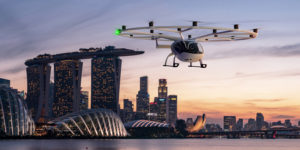
It is not the first landmark UAM venture that Skyports has been involved in. In October 2019 in Singapore the company, in which Groupe ADP is a shareholder, showcased VoloPort, a prototype of the world’s first passenger vertiport that the company had developed in partnership with eVTOL developer Volocopter.
Duncan Walker, CEO of Skyports says the goal is for the VoloPort to be “fully operational in Singapore within the next two years”. Skyports also has partnerships with a number of other cities around the world and aims to be amongst the first movers in the roll-out of vertiport infrastructure.
Although there are some fixed-wing UAM solutions that need to take-off from a runway, the majority use vertical take-off and landing aircraft. The design features of vertiports are therefore likely to have more in common with heliports than any other air transport modality.
Walker says, “There is not a lot of difference between a vertiport and a heliport. Whilst there’s work ongoing with standards bodies to define VTOL electric operations versus combustion engine operations, the principles are the same.
“You’ve got to have a safe landing area, you’ve got to have proper separation, clear taxiways, a certain number of gates. You’ve got to have safe refueling.
“Since the principles are the same and there are currently no defined vehicle standards for VTOLs, many in the industry are using helicopter standards for now.”
However, Walker identifies two key differences between heliports and vertiports. There is a logistical challenge dealing with electrification, including on-site charging capabilities. Vertiports are also expected to have a higher throughput of vehicles compared to heliports. “This is anticipated to be a scalable form of transport for the many, not a high-end form of transportation for the few,” he says.
But Walker believes an even more significant difference than both of these will be the implications of the much lower noise profile that eVTOLs will have compared to helicopters because of their electric-powered engines. Walker says, “We think that it will lead to higher public acceptance
of the technology, which will allow these vehicles to
operate more in city center environments, opening up new possibilities.”
Locations
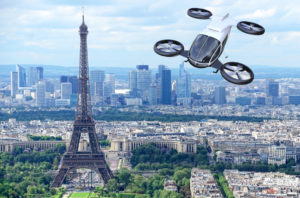
As well as social acceptance the other key driver of where vertiports will be located are the use cases for UAM. Walker identifies two, as a taxi service within cities and as a shuttle between urban centers and major hub airports. Longer range fixed-wing eVTOLs also hold out the possibility of longer range intercity routes.
Skyports has its sights fixed on city center sites for its vertiports and has been acquiring real estate in cities around the world to potentially build on. However, the large transport networks envisaged for most UAM solutions will also require integration with existing aviation infrastructure.
Routes linking commercial airports with city centers, which Walker believes will be one of the first to gain traction, will require the development of on-site vertiports at many major international hubs around the world.
Existing general aviation (GA) airport infrastructure is also likely to play a significant role, says Couturier. As well as being the owner and operator of Paris’ three major airports – Charles De Gaulle, Orly and Le Bourget – the Groupe ADP’s assets also include 10 GA airports in the greater Paris region, including Pontoise-Cormeilles-en-Vexin.
This “integrated airport system” will be used by Groupe ADP in the development of its UAM solution for Paris, says Couturier, which is being driven partly by the forthcoming Paris Olympics in 2024.
Meanwhile, a number of GA airports in the USA are located much closer to city centers than large commercial airports, making them more suitable as locations for vertiports. For example, Santa Monica Airport is located at the heart of the beachfront town of Santa Monica, next to Los Angeles. While on the East Coast New Jersey’s Teterboro Airport is only 12 miles (19km) from Manhattan.
Alex Gertsen, director of airports and ground infrastructure at the US trade body, the National Business Aviation Association (NBAA), says that a number of companies are interested in using Santa Monica as a base for fixed-wing UAM operations.
However, locating a vertiport at an existing airport brings with it a range of challenges not least of which are the safety risks associated with high-capacity electrical equipment and storage, believes Gertsen.
“Right now we have the capabilities for putting out fuel fires but in the future we’ve got to be equipped to put out electrical battery fires,” he says.
Airspace issues
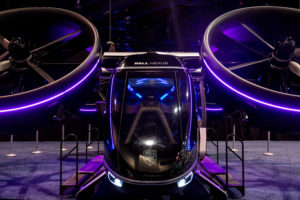
There is also the challenge of integrating vertiports within existing airport infrastructure and operations. While the biggest issue in having vertiports in city centers is the availability of space on the ground, when it comes to airports the main challenge is the availability of airspace.
“The primary role of an airport is to provide access to airspace,” says Walker. “There’s lots of things moving around at a very low level.”
A crucial job for the developers of vertiports will be integrating them into the wider air traffic management (ATM) system, says Couturier. A key part of the Pontoise tests will be a partnership with the European air traffic body, Eurocontrol, looking at how “air traffic controllers will interface the operation of the vehicles and drones with the current ATM traffic,” says Couturier.
Questions around the management of airspace will play a role in where exactly to situate vertiports on airport sites. Another factor likely to influence their location is security. Passengers taking an eVTOL from the city center to an airport-based vertiport located airside would require a much higher level of screening than passengers flying to a landside facility, for example.
Whatever the stakeholders ultimately decide, the final iteration of the vertiport will need to be as seamless an experience as possible, warns Couturier. “If we want air mobility to scale up we need to have a seamless journey to ensure that the client is gaining time compared to existing modes of transport,” he says.
But creating these time savings may require challenging the culture of the commercial airport industry, believes Couturier. The business model of commercial airports depends on keeping passengers waiting, so that they can take advantage of on-site retail services. Seamless, fast and flexible transfers for individuals and small groups to and from aircraft are very much what private charter operators and FBOs specialize in.
Developing a seamless process will also mean a different service for passenger luggage, because some eVTOL aircraft are likely to be too small to accommodate anything more than hand luggage alongside the traveler. This could involve couriering the luggage separately by road, says Couturier.
Another important factor in the design of vertiports – whether at airports or at standalone locations in the city – will be the need for
common-use infrastructure, “an agnostic design” as Couturier puts it, to accommodate the many different vehicle technologies that are currently being developed. For this reason the Pontoise test bed will play host to 30 different UAM companies.
Couturier says, “There are a lot of vehicle technologies being developed throughout the world today. From all these initiatives we have to identify the major technological trends and design accordingly.”
But in a technological landscape which is developing fast, vertiport designers must also take into account how UAM technology might change in the future. “We are building something that is going to last maybe as long as 50 years,” says Couturier. “So we better be sure of the capacity of the infrastructure to accommodate various types of vehicle.”
